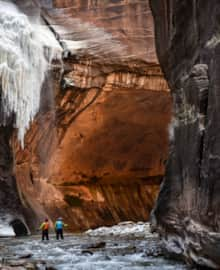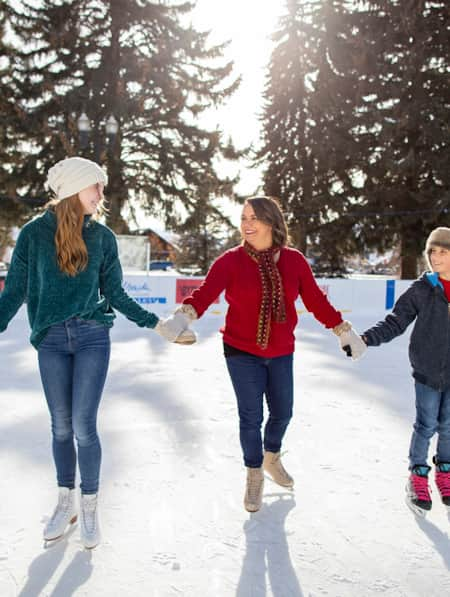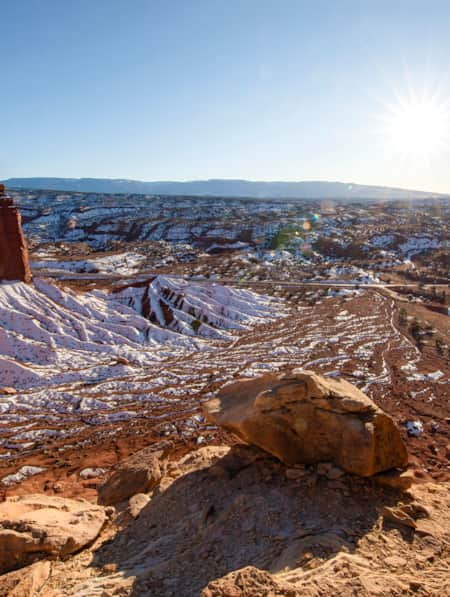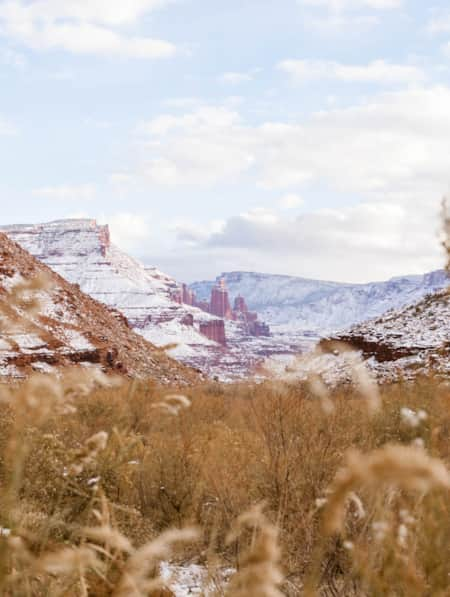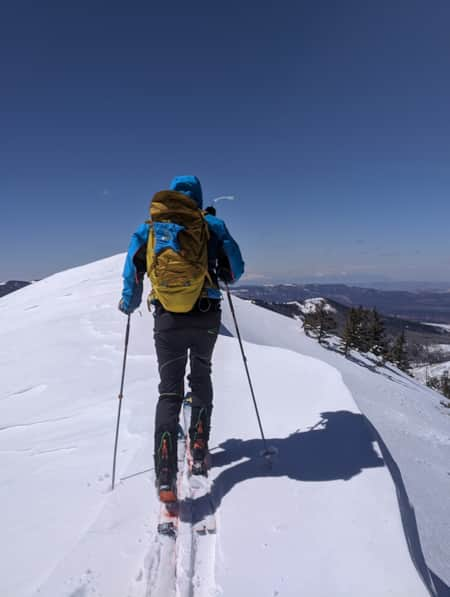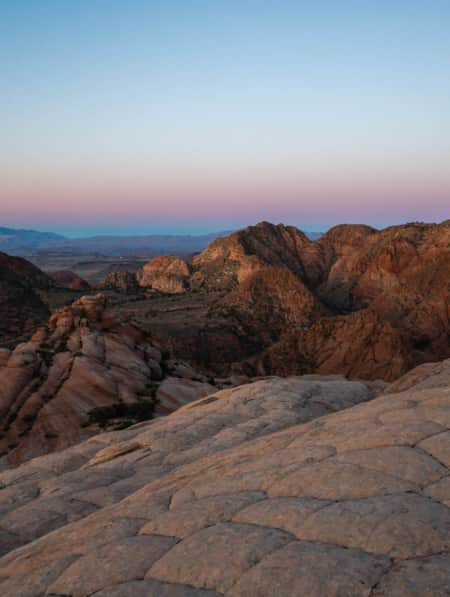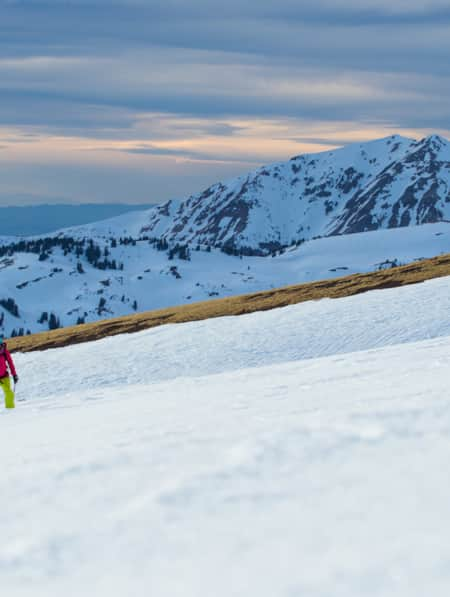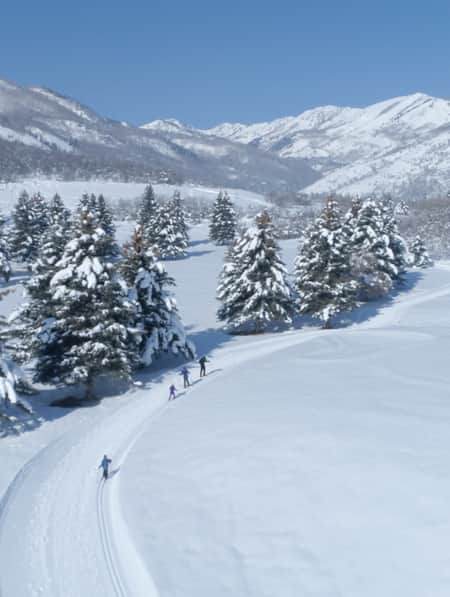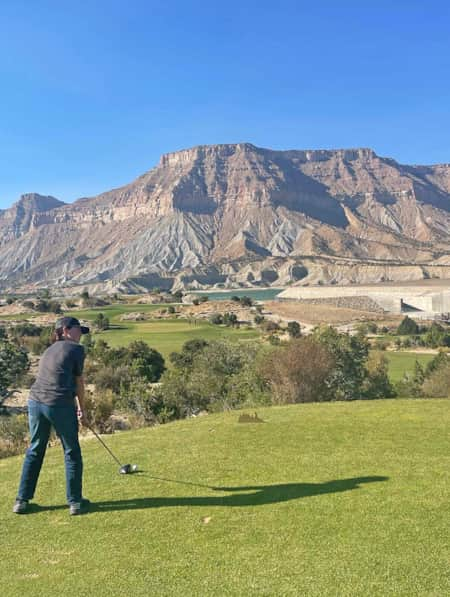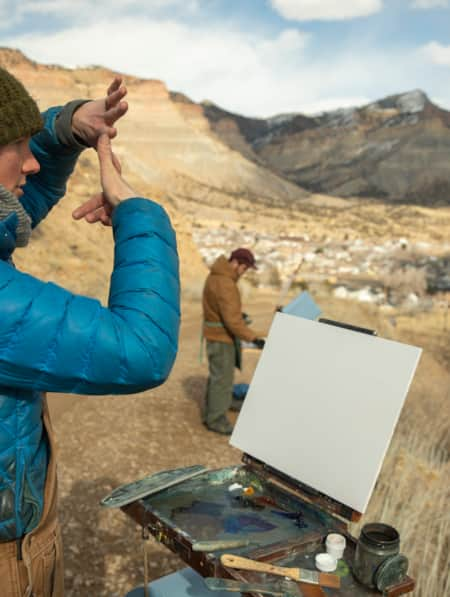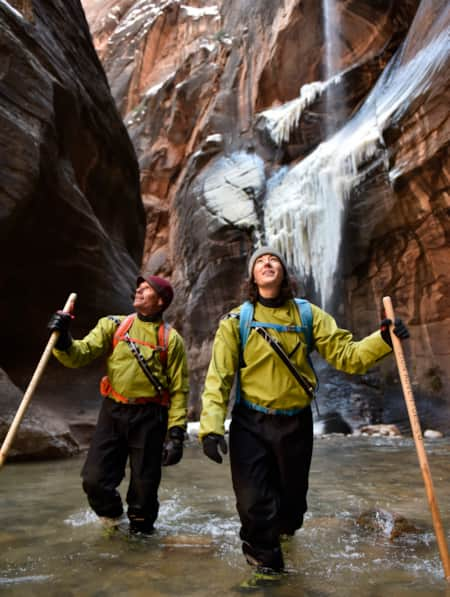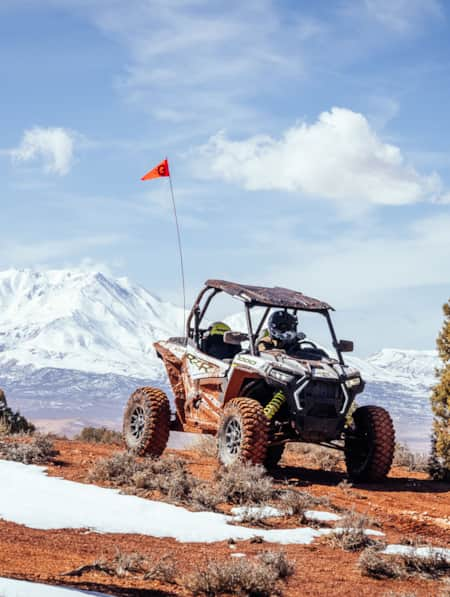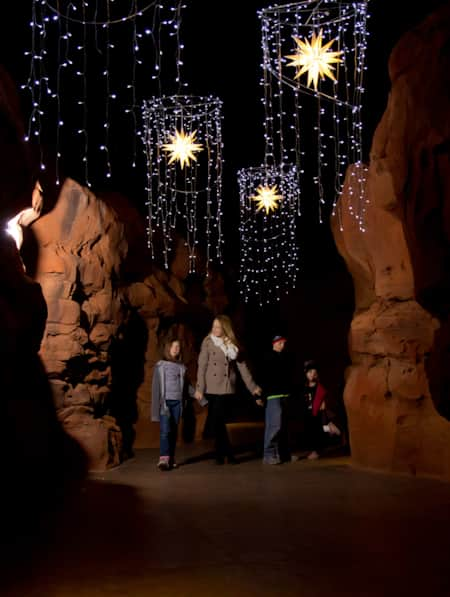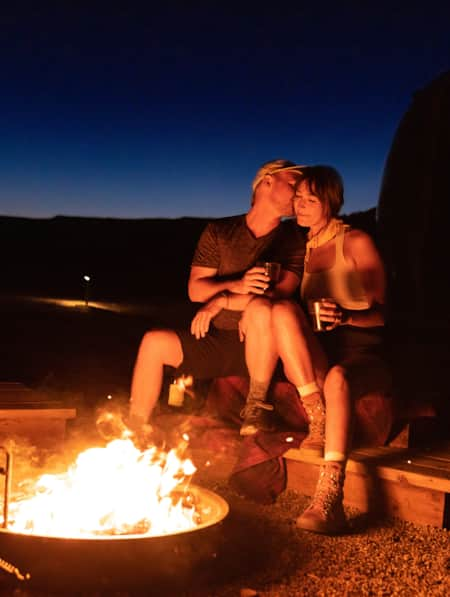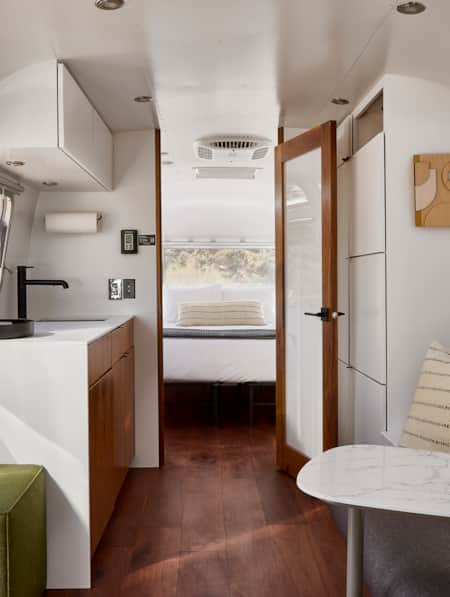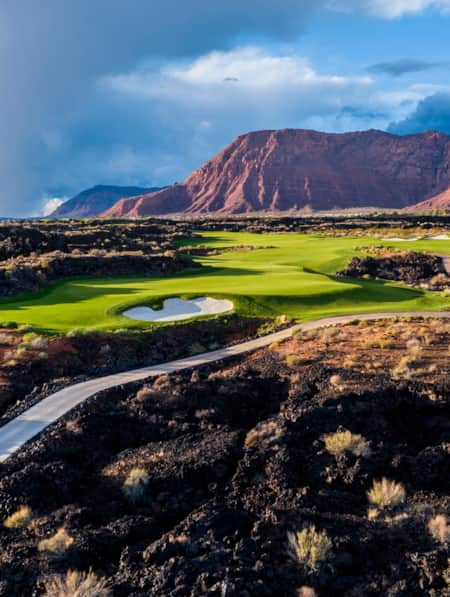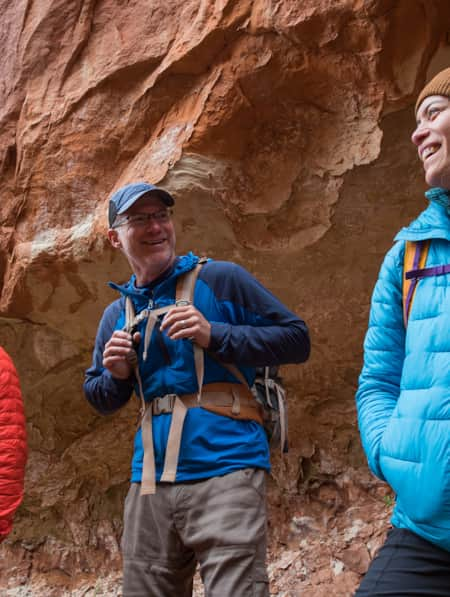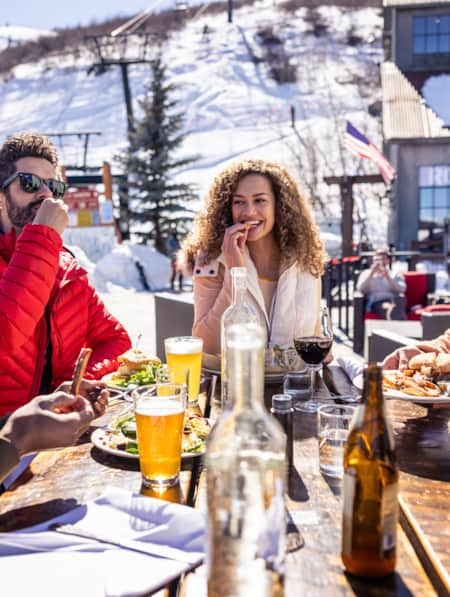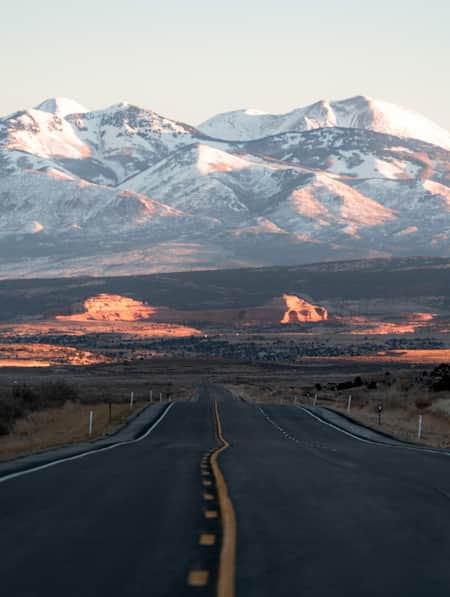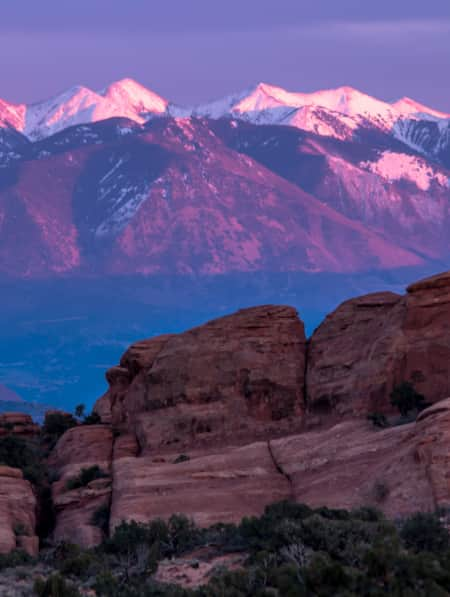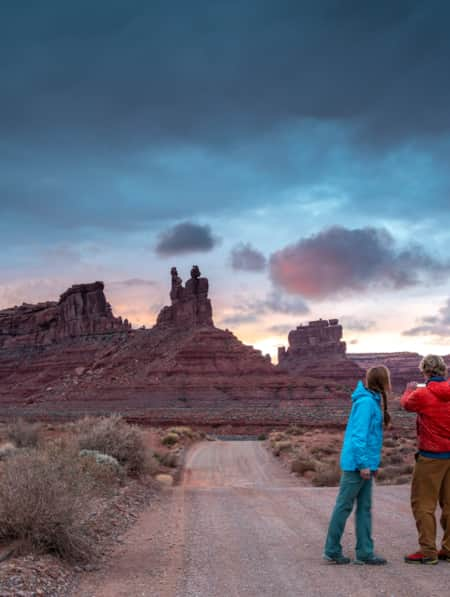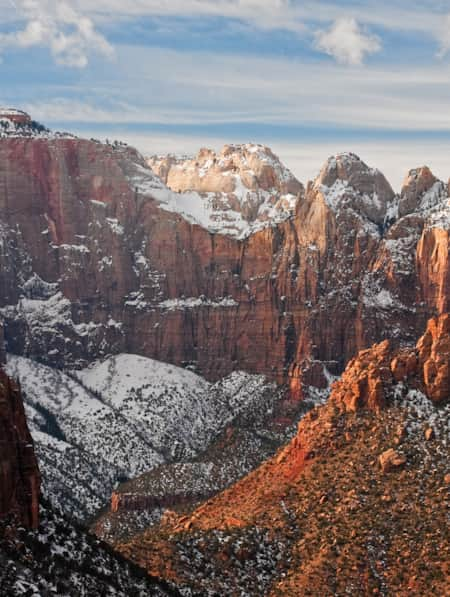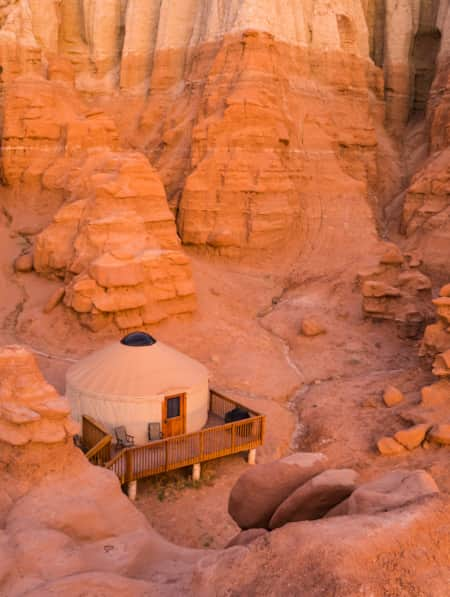A Winter Trip Through the Heart of Utah’s Desert
Experience a world unlike any you’ve ever imagined in the high desert mountains and plummeting canyons of south-central Utah. Your winter journey will include into two national parks, three state parks and all the scenic winding roads your heart could desire.
When you journey to south-central Utah and wander grand mesas, twisting slot canyons and oversized red rock "goblins," your first thought will probably be, "How does this even exist?" Short answer: geology, of course. But the long answer? Well, you'll just have to get to know the area up close to begin to grasp it.
This swath of high desert is awash in history, from its original Native American inhabitants to nineteenth-century settlers and cowboys...and now, you, stepping foot into the wide open. This four-day itinerary takes you into slot canyons just as wide as your shoulders, toadstool-shaped rock gardens, soaring sandstone arches and a hiking trail worthy of the name "Fairyland."
While these lands are remote, Capitol Reef and Bryce Canyon national parks draw many visitors during the warmer months. Which is why the wisest travelers wait till winter sets in. The desert falls quiet. Just you, your breath, the crunch of snow and a near-mystical landscape.
This is, of course, a desert, but keep in mind that it's high elevation, and certainly not warm in the winter (Read: How To Visit Southern Utah in Winter). Temperatures can dip into the 30s, 20s, or lower and roads can get icy. So bundle for cool-weather hiking and keep in mind that a hotel or Airbnb will probably be much preferable to camping. (Read: Take Advantage of Southern Utah’s Off-Season with Winter Glamping)
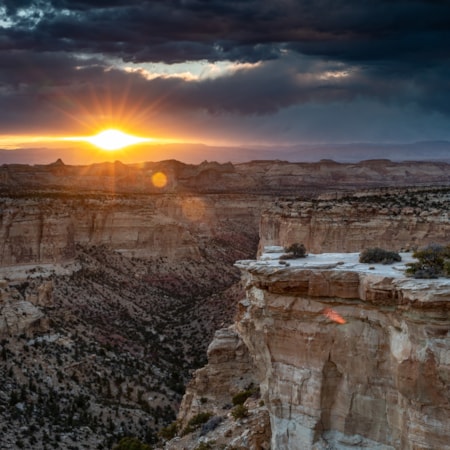
Have a (San Rafael) Swell Time
36 Miles
The San Rafael Swell is a jaw-dropping geological feature made of a huge fold of rock laters jutting up above the surrounding landscape, which then eroded over eons as powerful flash floods carved deep, meandering slot canyons into the rock strata. The multicolored layers of rock that remain –– including Jurassic Navajo Sandstone, Jurassic Wingate Sandstone and Permian Cococino Sandstone –– make every surface seem like a work of art.
You can get an up-close and personal look at this geological artwork by hiking Little Wild Horse and Bell Canyons, which together form a 10-mile loop. Many slot canyons in the area are "technical," which means you need ropes and special expertise to navigate them, but these two are just a hike with a few spots where you may scramble, scoot, or want a boost for a little section.
Afterward, you can head back to Green River, the nearest town, for delicious burgers, sandwiches or salad at Tamarisk or grab some tacos at the town's year-round taco truck, Tacos La Pasadita.
Where to Stay: Green River or Goblin Valley State Park (Year-round camping and yurts available; advance reservations recommended)
Tips for Travel: Slot canyons are a hiker's bucket-list dream, but never go into a slot canyon if there's a drop of rain in the forecast, locally or anywhere nearby. Desert rain storms quickly turn to flash floods that are deadly if you're in a narrow canyon –– and on top of that, they make the area's dirt roads impassable. Other than that, simply be a smart hiker: lots of water, a map, warm layers for hiking in the cool shade and a camera. See more responsible travel tips.
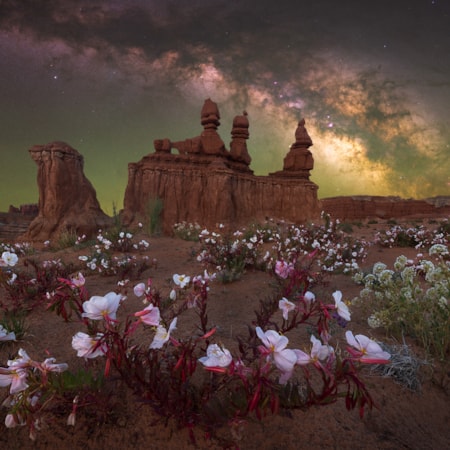
Fantastical Rock Formations Fit for Wandering
117 Miles
- Hike the Curtis Bench Trail amoung the Goblins
- Explore the Goblin's Lair
- Take a (super) scenic drive to Torrey
Wander a seemingly supernatural world of rock hoodoos at Goblin Valley State Park. These oddly shaped formations show signs of being at the margins of an ancient sea, where the ebb and flow of tides and currents carved the Entrada sandstone into the columns and channels we see today.
The Curtis Bench trail and Goblin's Lair Trail will give you a glimpse into two sections of the park, which look particulary stunning when snow-capped in the winter. The lair is an expansive grotto carved by the elements over the millennia. It's just shadowy enough to make you think that if goblins existed, they'd live here. You probably won't put your camera back into your pack all day, and that's okay. When you've had your fill of hiking and goblin-strolling, finish the day with a gorgeous drive to Torrey. The road cuts through a swath of Capitol Reef National Park and will leave you eager to explore it the next day.
Where to Stay: Torrey
Tips for Travel: While most small towns in Southern Utah have at least one restaurant or corner store open year around, not all do, or they may have abbreviated hours in the winter. Plan your meals ahead; there are nice little grocery stores in nearby Loa and Hanksville if needed. And, there's a delightful restaurant called Curry Pizza in Bicknell, population 327 — which is about 9 miles west of Torrey — if you need a reliable bite. They serve Indian curries, pizzas and Indian curry pizzas. And in Torrey you'll find breakfast and sandwich fare at The Wild Rabbit Cafe from Thursday-Sunday. (Read: An Insider's Guide to Torrey)
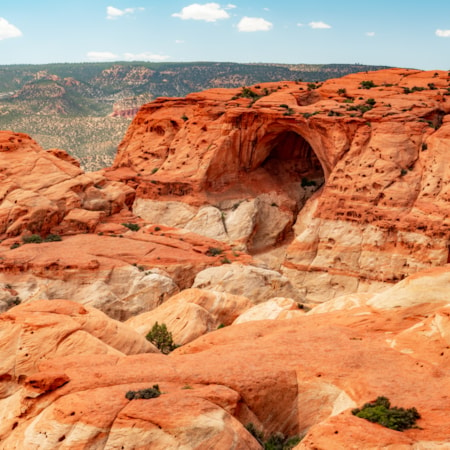
Explore the Red Rock Hideouts of the West’s Outlaws
59 Miles
A desert "wash" may not sound exciting, but the river washes of Utah's desert actually serve as some of the most navigable pathways through the area's red rock mazes. They're an incredible way to stroll through geological history written in the layered colors, textures and patterns of the canyon walls above you. Grand Wash is just one of these places; just a few miles' hike takes you through some classic "narrows," arriving at Cassidy Arch, named for the area's famous Butch Cassidy outlaw history.
Head back to tiny Fruita, a famed homesteading site for the area's early white settlers, who relied on the land and beautiful orchards for almost everything needed to survive. A few original buildings, such as the one-room schoolhouse, give you a glimpse back in time. Then, finish the visit with a drive down to Capitol Gorge and the short optional hike (worth it!) to see ancient petroglyphs, the Pioneer Register and "The Tanks." Natural water "tanks" are deep divots in the rock where rainwater and snowmelt collect, serving as oases for wildlife in the delicate desert ecosystem.
You'll finish a beautiful day with a gorgeous sunset drive on the Scenic Byway 12 to Boulder. Plan on stopping at every overlook, if you can. Each one is worth it, as you gaze down at the national park you were just in, now from 9,000 feet elevation on a forested mountain.
Where to Stay: Boulder
Tips for Travel: Finish your afternoon with a meal in Torrey, as most restaurants in Boulder (your evening destination) close for the winter (Read: Off the Eaten Path: Dining Between the Mighty Five). You can also pick up a few grocery supplies and can cook in a Boulder hotel room with a kitchenette or in an Airbnb rental. One important driving tip: Scenic Byway 12 goes over Boulder Mountain, which in winter can be very snowy and icy. Drive cautiously, bring a four-wheel-drive vehicle and avoid driving at night if it's snowy, as the road isn't plowed after sunset.
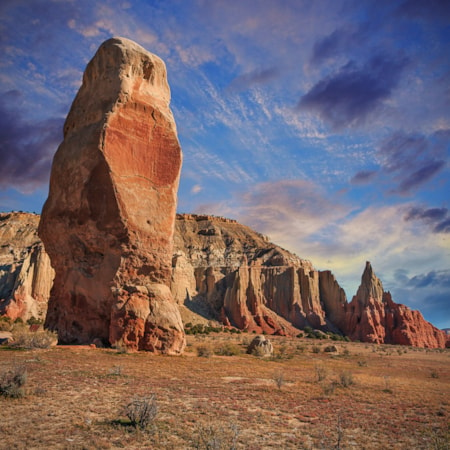
Life in Full Color: From Kodachrome to Fairyland
91 Miles
- Breakfast in Escalante
- Photos in Kodachrome Basin State Park
- Wander the rainbow-hued pinnacles of Bryce Canyon National Park
Buckle up for one of the prettiest drives of your life (aside from the one yesterday and the day before) as you navigate the famous "Hogback" of Scenic Byway 12 from Boulder to Escalante. This winding road features steep drop-offs on both sides, giving you an airy 360-degree view of the dramatic landscape around you.
About 45 minutes after you pass Escalante, you'll turn toward Kodachrome Basin State Park, which is very appropriately named for its bold color palette. Take a little time to bask in any of the park's marked walking trails, then hit the road for Bryce Canyon National Park.
Once arrived at Bryce Canyon, treat yourself to as long a hike as you have time for. This vast fairyland is rich in nooks, crannies, pinnacles and side canyons to explore. (In fact, our favorite trail is called the Fairyland Loop.) If you don't have time for the full loop, no sweat; try the 1.5-mile Navajo Loop or the Mossy Cave Turret Arch, named for its spectacular inclusion of a mossy cave and rock turrets and a beautiful arch –– plus a waterfall that turns to dramatic icicles in winter. Yes, we know. This place is good. If there's snow on the trail, traction footwear like Yaktrax are a good option to have handy.
Where to Stay: The Bryce Canyon Lodge is open for part of the winter. If it's not open, Ruby's Inn in Bryce Canyon City is a sure thing.
Tips for Travel: It's a recurring theme, we know, but you'll be at high elevations again today and that means winter conditions can exist on the roads and trails. Check the weather before your day's drive and plan accordingly. And, along the same lines, Bryce Canyon National Park sits at 8,000 feet, which is cold in the winter. Bundle up more than you think you'll need to, bring good snow boots and double up on the down jackets if you sign up for one of the ranger-guided stargazing tours in the park, which is an International Dark Sky location. The stars are even prettier when you're comfortably warm.
